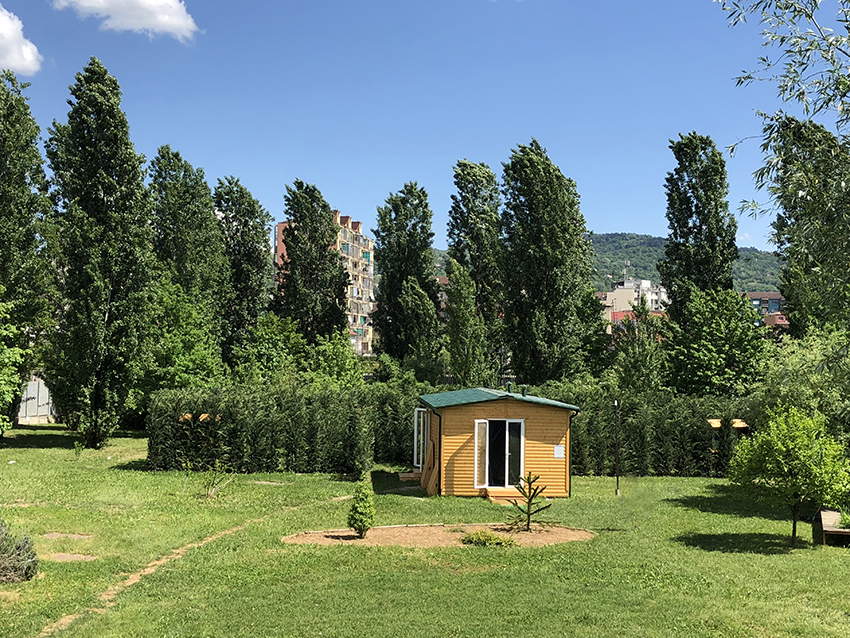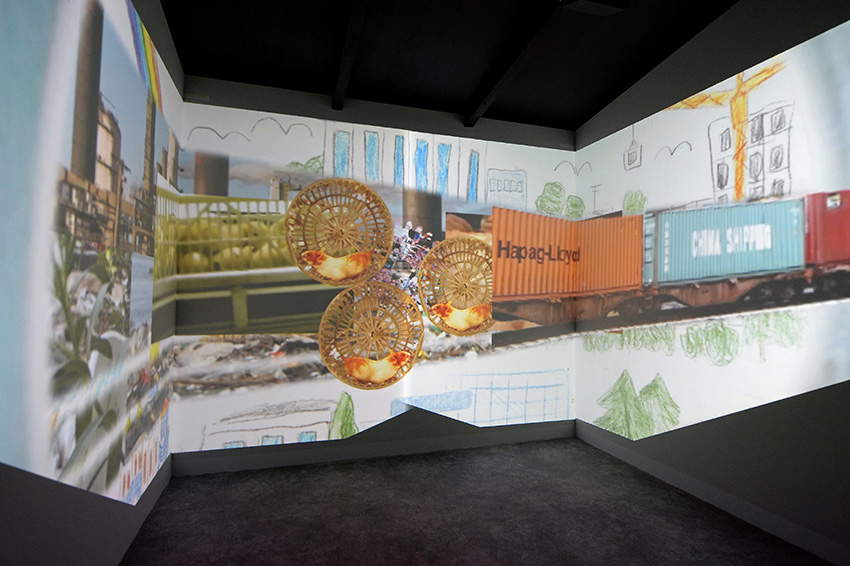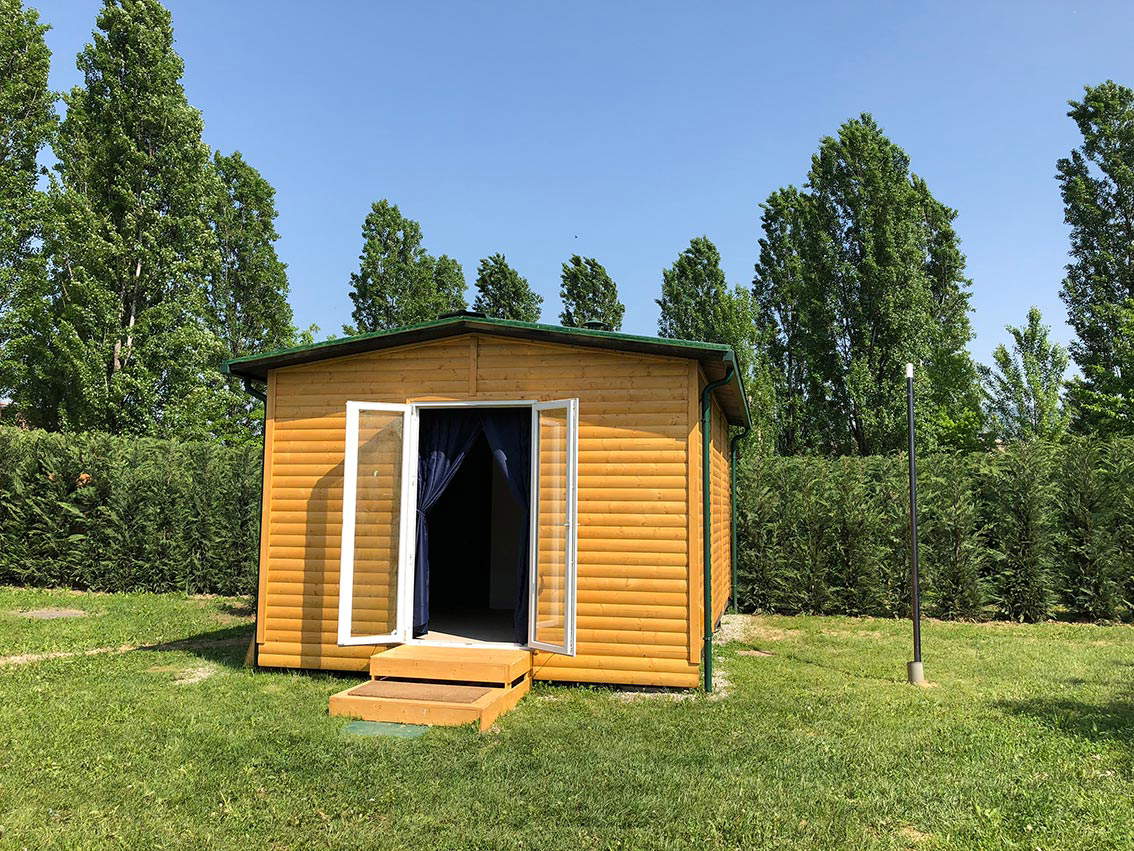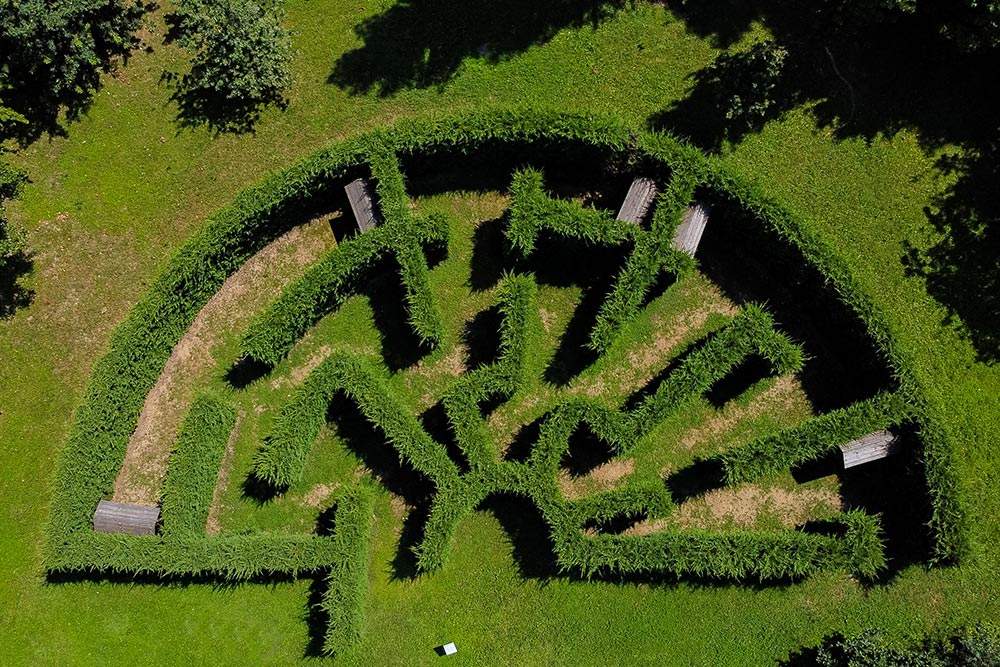Can one talk about the current climate crisis through a labyrinth? According to Piero Gilardi (Turin, Italy, 1942 - 2023), anArte Povera artist in the late 1960s and later among the artists who most worked on the connections between art and the environment, the answer is definitely yes. And to get to know it, it is necessary to go to PAV, Turin’s Parco Arte Vivente, an experimental open-air center for contemporary art, conceived by Gilardi himself who wanted to make it an “incubator of ecological consciousness,” and born in 2008: a park built over what was once an industrial area in the Filadelfia neighborhood, which over the years has been filled with environmental installations, mostly made with plants and greenery, and was conceived as a kind of outdoor museum’open-air museum that does not, however, respond to an established structure, but instead grows according to a perspective of constant evolution, including through the natural connections that are created, often unexpectedly, between plants, animals, and human beings who visit PAV.
Within PAV, in 2018, Piero Gilardi gave shape to his Labyrinthic Anthropocene, a labyrinth that addresses the theme of environmental problems afflicting humanity, in line with the research of the last phase of the artist’s career, entirely aimed at spurring empathy for the natural environment and in particular developing awareness around the theme of environmental sustainability. Gilardi’s reflection starts from the concept of “anthropocene” (a term first used by the Dutch chemist Paul Jozef Crutzen in 2000), the term used to denote the current geological epoch, which is characterized by the many changes that the environment undergoes as a result ofhuman beings (the Greek word ántropos means in fact “human being”). In Gilardi’s perspective, however, the human being, besides being the actor who modifies the environment, is also the one who devastates it, who leads it toward destruction. Concepts such as "climate crisis," "climate adaptation," "carbon emissions," "renewable energy," "ecological transition," “biodiversity,” and many others have now become part of our daily lives. We have all discussed and are discussing them. And that the current climate crisis will lead to enormous problems for humanity unless we start doing something about it now, everyone agrees.



In Gilardi’s work, the causes of the current crisis are attributed in part to the constant growth-oriented capitalist system , which needs to exploit the planet’s resources to feed itself, and in part to the very nature ofhomo sapiens seen as “voracious colonizer and ’pyromaniac,’” as the work’s own card explains. Nevertheless, there are societies and communities that resist the neoliberal perspective, putting the reasons of the capitalist system before those of environmental protection. It is on this ground that Labyrinthian Anthropocene is developed. Conceived in 2017, the work was inaugurated the following year on the occasion of the2018 Art Program of the Living Art Park, dedicated precisely to themes related to the Anthropocene, culminating in The God-Trick motra curated by Marco Scotini.
“It all goes back to 2017,” Gilardi explained, “when reading ecology texts I discovered the word ’anthropocene,’ which means that man, we humans, have an impact on the earth that is similar to a geological force. It is not that we are simply disturbing the atmosphere with our fumes, no: we are changing the arrangement of the atmosphere and the earth’s crust. Thinking that man is a geological force, and that we have changed era, that is, we have gone from the Holocene to the Anthropocene, is a leap of scale in all the reasoning that is being done about the ecological collapse of our planet and the remedies and transformations that are becoming more and more urgent.”
The work consists of two distinct moments: first, one enters a dark space, a virtual prologue consisting of an installation that alternates between narrative and interactive moments and shows visitors, through projections, apocalyptic images (e.g., the extinction of plant and animal species) caused by the extreme consequences of the climate crisis, and a floor on which the audience is asked to rid the sea of waste and polluting contamination. Once the prologue is over, through a tunnel, one exits into the open air and enters the labyrinth proper: it is semicircular in shape, consists of cypress hedges , and has no obligatory path. It is up to the visitors to find their way out, thus avoiding blind corners or dead ends, where they will nonetheless find wooden kiosks, similar to those commonly found in parks, where virtuous examples of groups and communities around the world, from the U.S. to Europe and beyond, are showcasing virtuous proposals to demonstrate how it is possible to live sustainably on the planet: Examples include the Ocean Cleanup project in Japan (floating barriers that filter plastics in the oceans) or Recology in San Francisco (a citywide recycling collection system). And, as a result, they point to ways to get out of the labyrinth.





“The structure of this installation,” the artist further explained in illustrating his work, "proposes a labyrinthine path, as labyrinthine is the perception of the environmental crisis in public opinion hammered by multiple factors of existential uncertainty-from climate change to migratory flows, from terrorism to threats of war-and disoriented by the manipulative rhetoric of the mainstream media. It is a so-called multiviary labyrinth in which visitors, searching for the exit will often find themselves in blind spots, which through graphic kiosks will offer them some crucial questions to identify operational and social ’ways out’ of the ’maze of the Anthropocene."
A labyrinth, then, as a pathway to visitor awareness around issues that concern the future of the planet: the disorientation one feels in the maze is the same as the disquiet caused by the climate crisis and the many threats related to it, but at the same time it is also a means to move those who feel it to action, or at least to make them aware of the ecological outcome of their actions. This, at least, is the goal of Labyrinthic Anthropocene. Art historian Gaia Bindi, formerly a collaborator of Piero Gilardi precisely at PAV, in her volume Art, Environment, Ecology (published by Postmedia Books, 2019), in which she takes stock of the most interesting contemporary works that develop environmental themes, mentions the Labyrinthic Anthropocene as a work that develops through three creative practices (the reenchantment towards thenatural environment, reflection on the process of degradation and the consequent technosciences of sustainability, and the invitation to the creation of collective experiences) and which represents one of Gilardi’s most articulate works on the environmental theme.
“With this installation,” the artist said again, “I would like to communicate to the public, to the people who come here, and who can also make comments by interjecting through their smartphones, the feeling that we have really arrived not at the end of the world, but at the end of a world: the anthropic world, the world of anthropocentrism, the world that has led to absolute technological dominance over nature. But nature is now giving us all its signs of exhaustion, of weariness. Many people say we are worried because we will run out of habitat: but those who really believe this, those who have adhered to deep ecologism, instead think about all other living things, this interaction that there is between us, animals, plants and even the inanimate world. Everything is connected by a continuous, vital interaction.” With the idea, suggested by Gilardi, that art acts on everyone’s sensibility.
 |
| A Labyrinth on the Environmental Crisis. Piero Gilardi's Labyrinthic Anthropocene. |
Warning: the translation into English of the original Italian article was created using automatic tools. We undertake to review all articles, but we do not guarantee the total absence of inaccuracies in the translation due to the program. You can find the original by clicking on the ITA button. If you find any mistake,please contact us.